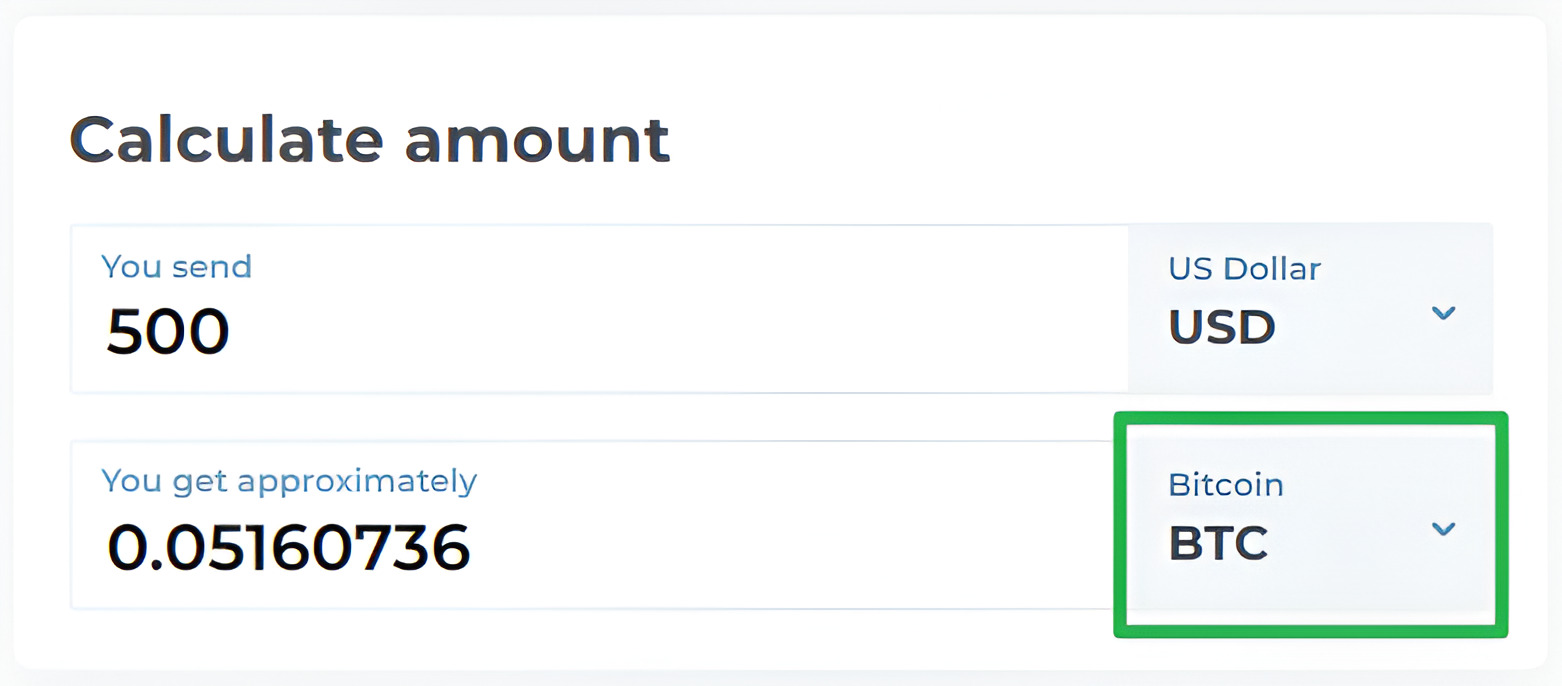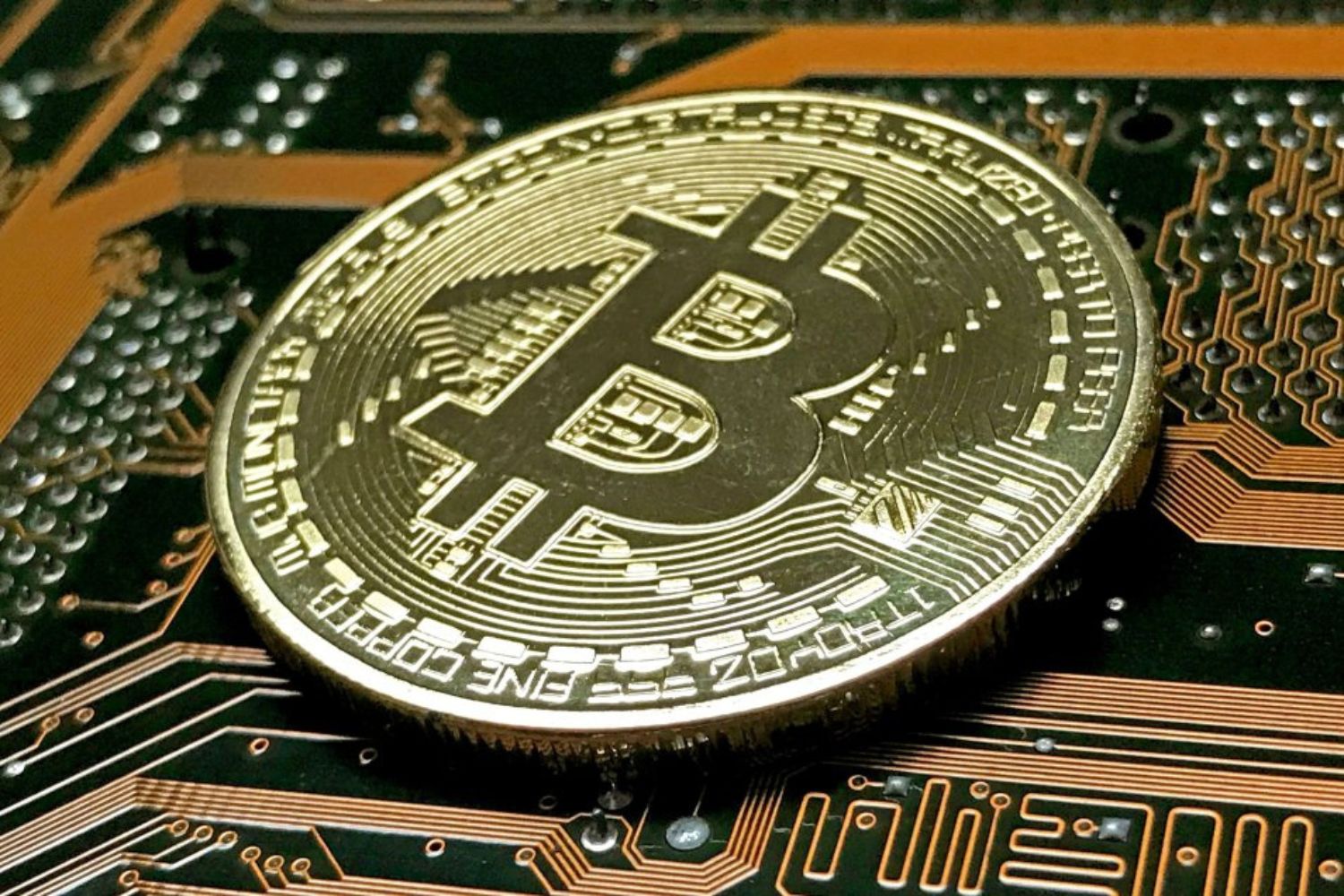Introduction
Bitcoin has become a buzzword in the world of finance and technology, captivating the attention of investors, enthusiasts, and skeptics alike. Launched in 2009 by an anonymous person or group under the pseudonym Satoshi Nakamoto, Bitcoin introduced a disruptive concept: a decentralized digital currency that operates on a peer-to-peer network. The meteoric rise of Bitcoin’s value over the years has left many wondering how this cryptocurrency gained such immense worth.
In this article, we will delve into the factors that have contributed to Bitcoin’s value, exploring the history and origins of this digital currency. We will also examine the concept of digital scarcity, the role of mining and blockchain technology, the growing adoption and network effect, and the perceived value and trust in Bitcoin. Furthermore, we will explore the economic and market factors influencing Bitcoin’s value, government regulations, investor demand and speculation, and comparisons to traditional currencies and store of value.
As you embark on this exploration of Bitcoin’s value, it is important to note that the cryptocurrency market is highly volatile and subject to rapid fluctuations. Therefore, the factors influencing Bitcoin’s value are multifaceted and intertwined, making it a complex ecosystem to analyze. Nevertheless, understanding the foundations and dynamics of this digital currency is crucial for comprehending its value proposition.
So join us on this journey as we unravel the mysteries behind Bitcoin’s value and explore the various elements that have contributed to its rise as a prominent and influential cryptocurrency.
The History and Origins of Bitcoin
Bitcoin’s story began in 2008 when a mysterious figure or group using the pseudonym Satoshi Nakamoto published a whitepaper titled “Bitcoin: A Peer-to-Peer Electronic Cash System.” This groundbreaking paper outlined the principles and mechanisms behind Bitcoin, introducing the world to the concept of a decentralized digital currency.
The motivation behind Bitcoin’s creation was to address longstanding flaws in the traditional financial system, such as centralized control and the potential for government interference. By leveraging blockchain technology, Bitcoin aimed to enable secure, transparent, and censorship-resistant transactions.
On January 3, 2009, the first block of the Bitcoin blockchain, known as the genesis block, was mined by Nakamoto. This marked the official launch of Bitcoin, with the first transaction occurring shortly after – a transfer of 10 Bitcoins between Nakamoto and software developer Hal Finney.
In its early days, Bitcoin attracted a small community of tech enthusiasts and privacy advocates. The value of a single Bitcoin was practically negligible, with early transactions often involving thousands of Bitcoins for simple purchases. However, as more individuals and businesses became aware of the potential of this new digital currency, its value began to increase.
One significant event in Bitcoin’s history was the creation of the first cryptocurrency exchange, BitcoinMarket.com, in March 2010. This allowed users to trade Bitcoin for fiat currencies, providing liquidity and establishing a market value for Bitcoin.
A major milestone for Bitcoin came in May 2010 when Laszlo Hanyecz made history by becoming the first person to make a real-world purchase with Bitcoin. Hanyecz famously bought two pizzas for 10,000 Bitcoins, a transaction now celebrated as “Bitcoin Pizza Day.”
Over the years, Bitcoin gained traction and popularity, fueled by its unique features and potential for financial sovereignty. It emerged as an alternative investment and store of value, attracting both individuals seeking to diversify their portfolios and those looking to escape the traditional banking system’s limitations.
Today, Bitcoin’s historical significance and Nakamoto’s enigmatic identity continue to intrigue the world. Bitcoin has paved the way for thousands of other cryptocurrencies and has sparked a global movement towards decentralized digital currencies.
The Concept of Digital Scarcity
In the realm of traditional currencies, governments and central banks have the authority to create unlimited amounts of money, leading to inflation and a decrease in the value of the currency over time. Bitcoin, on the other hand, was designed with a groundbreaking concept – digital scarcity.
Digital scarcity refers to the limited supply of a digital asset. In the case of Bitcoin, there will only ever be 21 million Bitcoins in existence. This predetermined supply is enforced by the underlying technology called blockchain, which operates as a decentralized ledger of all Bitcoin transactions.
The scarcity of Bitcoin is fundamentally different from traditional currencies. While fiat currencies can be printed at will by central authorities, Bitcoin’s supply is fixed and mathematically determined. This fixed supply creates a scarcity that, in turn, has a profound impact on its value.
The scarcity of Bitcoin is enhanced by the process of mining. Miners use specialized hardware to solve complex mathematical puzzles, validating and securing transactions on the Bitcoin network. In return for their computational efforts, miners are rewarded with newly minted Bitcoins. However, as time passes, the reward for mining new Bitcoins decreases, ensuring a gradual and controlled issuance until the maximum supply is reached.
The concept of digital scarcity is not only limited to Bitcoin but extends to other cryptocurrencies as well. Many cryptocurrencies utilize a fixed or controlled supply to maintain their value proposition, creating an environment where scarcity drives demand and, subsequently, value.
Digital scarcity has far-reaching implications beyond the world of cryptocurrencies. It has sparked the rise of non-fungible tokens (NFTs), which are unique digital assets representing ownership of digital or physical items. NFTs leverage the concept of scarcity to confer value and ownership in the digital realm, revolutionizing industries such as art, collectibles, and virtual real estate.
The concept of digital scarcity challenges traditional notions of money and ownership, offering a new paradigm where scarcity is not dictated by physical constraints, but by cryptographic algorithms and decentralized consensus. Bitcoin’s embodiment of digital scarcity has contributed to its desirability and has positioned it as a unique asset class in the global financial landscape.
The Role of Mining and Blockchain Technology
Mining and blockchain technology play a crucial role in the operation and security of the Bitcoin network. Mining serves two key purposes: validating transactions and minting new Bitcoins. At the heart of mining is the revolutionary technology known as blockchain.
The blockchain is a decentralized and immutable ledger that records all Bitcoin transactions. It consists of a chain of blocks, each containing a batch of transactions. Miners compete to solve complex mathematical puzzles, which, when solved, allow them to add a new block of transactions to the blockchain.
The mining process ensures the integrity and security of the Bitcoin network. When a miner successfully mines a new block, it is added to the blockchain, creating a permanent and tamper-proof record of all transactions. The decentralized nature of the blockchain, where multiple miners validate and agree on the order of transactions, prevents fraudulent activities and ensures a consensus among participants.
In addition to transaction validation, mining also serves as the mechanism for creating new Bitcoins. Miners are rewarded with a certain amount of Bitcoins for each block they successfully mine. Initially, the block reward was set at 50 Bitcoins, but it is halved approximately every four years in an event known as the “halving.” The most recent halving occurred in May 2020, reducing the block reward to 6.25 Bitcoins.
The mining process requires significant computational power, as miners compete to solve the mathematical puzzles. In the early days of Bitcoin, mining could be done using CPUs (Central Processing Units). However, as the network grew and the difficulty increased, mining shifted to GPUs (Graphics Processing Units) and later to specialized ASIC (Application-Specific Integrated Circuit) miners, which are specifically designed for Bitcoin mining.
Mining, while essential for the functioning of the Bitcoin network, has also raised concerns about its environmental impact. The energy consumption associated with mining has led to discussions about the sustainability and carbon footprint of Bitcoin. However, it is worth noting that renewable energy sources are increasingly being utilized for mining operations, mitigating some of these concerns.
Beyond Bitcoin, blockchain technology has broader applications. Its decentralized and transparent nature has attracted interest from various industries, including finance, supply chain management, healthcare, and voting systems. Blockchain has the potential to revolutionize these sectors by offering increased security, efficiency, and trust in transactions and data management.
Overall, mining and blockchain technology underpin the operation and security of the Bitcoin network. The decentralized nature of blockchain and the incentivized mining process have been instrumental in establishing Bitcoin as a robust digital currency with global reach and considerable potential for innovation in a wide range of industries.
The Growing Adoption and Network Effect
One of the key drivers of Bitcoin’s value is its growing adoption and the network effect it creates. As more individuals, businesses, and institutions embrace Bitcoin, its utility and acceptance as a legitimate form of currency expand.
Bitcoin started as a niche interest among tech enthusiasts but has gradually gained mainstream recognition. Today, numerous companies accept Bitcoin as a form of payment, ranging from small businesses to multinational corporations. This widespread acceptance has fueled the perception of Bitcoin as a viable medium of exchange and has contributed to its increasing value.
The network effect plays a vital role in Bitcoin’s adoption. As more people adopt and use Bitcoin, the network becomes more valuable and robust. The network effect refers to the idea that the value of a product or service increases as more people use it. The more users on the Bitcoin network, the more liquid and accessible it becomes, making it more attractive to newcomers.
Moreover, the network effect extends beyond individuals to financial institutions and governments. As more institutions integrate Bitcoin into their systems, such as offering Bitcoin trading services or investing in Bitcoin, it further strengthens the network effect and adds to the perception of Bitcoin’s legitimacy.
Another aspect contributing to the growing adoption of Bitcoin is its borderless nature. Bitcoin allows for seamless, quick, and low-cost cross-border transactions compared to traditional banking methods. This benefit has made Bitcoin an attractive option for individuals and businesses involved in global trade. With the increasing globalization of the world economy, Bitcoin’s adoption can be seen as a logical progression in the digital era.
Additionally, the growing number of Bitcoin wallets and exchanges has made it easier for individuals to acquire and store Bitcoin. Wallets provide individuals with secure storage for their Bitcoin holdings, and exchanges offer platforms for buying and selling Bitcoin with fiat currencies. The availability and accessibility of these services have played a significant role in the widespread adoption of Bitcoin.
Bitcoin’s growing acceptance as a legitimate form of currency has also been reinforced by regulatory developments. While governments initially viewed Bitcoin with skepticism, many have started to establish regulations and frameworks to govern its use. This regulatory clarity has given individuals and institutions more confidence in engaging with Bitcoin and has contributed to its mainstream adoption.
As Bitcoin’s adoption continues to expand, its position as a global digital currency gains strength. The growing network effect and the increasing acceptance of Bitcoin as a medium of exchange provide a solid foundation for its value proposition and future growth.
The Perceived Value and Trust in Bitcoin
Bitcoin’s value is not solely defined by its utility or underlying technology but also by the perception of its value and the trust placed in it by its users. Bitcoin has been able to establish itself as a digital currency with intrinsic worth, largely driven by several factors that contribute to its perceived value and the trust it has garnered over time.
One of the key factors fueling the perceived value of Bitcoin is its decentralized nature. Unlike traditional currencies that are controlled by governments and central banks, Bitcoin operates on a peer-to-peer network without any central authority. This decentralized structure removes the need for intermediaries and central control, fostering a sense of trust and transparency in the system.
The limited supply of Bitcoin also adds to its perceived value. With a maximum supply of 21 million Bitcoins, scarcity is built into the design of the cryptocurrency. This scarcity, coupled with the growing demand, has contributed to the perception of Bitcoin as a store of value and a potential hedge against inflation, similar to gold.
Bitcoin’s pseudonymous nature has also played a role in its perceived value. While transactions on the Bitcoin network are transparent and recorded on the blockchain, the identity of the individuals involved in the transactions remains pseudonymous. This level of privacy can be attractive to individuals who value financial autonomy and security.
Furthermore, Bitcoin’s borderless nature and accessibility have contributed to its perceived value. Bitcoin allows for instant and low-cost peer-to-peer transactions across borders, making it an effective option for individuals in countries with limited access to traditional banking services. The ease of use and accessibility of Bitcoin have expanded its appeal to a global audience.
Bitcoin’s track record of security and resilience has also played a significant role in earning trust. While the cryptocurrency has faced some high-profile hacking incidents, the underlying blockchain technology has proven to be robust and resistant to tampering. The decentralized nature of the blockchain makes it difficult for malicious actors to manipulate the transaction history, increasing trust in the integrity of the system.
Moreover, the increasing acceptance of Bitcoin by reputable companies, institutions, and prominent investors has contributed to its perceived value and trustworthiness. Companies such as Tesla and Square have invested in Bitcoin, and financial institutions have started to offer Bitcoin-related services. These endorsements from established entities have added credibility to Bitcoin and reinforced trust in its potential as a valuable asset.
Lastly, the vibrant and active community surrounding Bitcoin has played a vital role in building trust and driving its perceived value. The community consists of developers, miners, traders, businesses, and enthusiasts who are actively engaged in the growth and development of Bitcoin. This collective effort has contributed to the continuous improvement of the technology and the expansion of use cases, further solidifying Bitcoin’s position in the digital landscape.
Overall, the perceived value and trust in Bitcoin are influenced by its decentralized nature, scarcity, privacy features, accessibility, security, institutional acceptance, and the vibrant community supporting its growth. These factors intertwine to create a narrative of value and trust in Bitcoin, positioning it as a unique and influential digital currency with significant potential in the financial world.
Economic and Market Factors Influencing Bitcoin’s Value
Bitcoin’s value is influenced by various economic and market factors that shape the perception and demand for the cryptocurrency. Understanding these factors is crucial for comprehending the dynamics of Bitcoin’s price movements and its position in the global financial landscape.
One significant factor influencing Bitcoin’s value is the supply and demand dynamics within the market. As the demand for Bitcoin increases, driven by factors such as growing adoption, investor interest, and geopolitical uncertainties, while the supply remains limited, the price tends to rise. Conversely, a decrease in demand or an increase in selling pressure can lead to price decreases.
Macroeconomic factors, such as inflation and economic instability, also impact Bitcoin’s value. Bitcoin is often seen as a hedge against traditional fiat currencies and a store of value in times of economic uncertainty. When there is a loss of confidence in government-issued currencies, individuals and institutions may seek refuge in Bitcoin, driving up its value.
Additionally, market sentiment and investor psychology play a vital role in Bitcoin’s value. Positive news, regulatory developments, institutional endorsements, or influential individuals advocating for Bitcoin can create a bullish sentiment, leading to increased demand and higher prices. On the other hand, negative news, market volatility, or regulatory crackdowns can trigger a bearish sentiment, resulting in price declines.
The global economic landscape and geopolitical events can also impact Bitcoin’s value. Factors such as trade disputes, political tensions, or economic policies can influence investor sentiment and drive capital flows into or out of Bitcoin. Traders and investors often view Bitcoin as a way to diversify their portfolios and navigate uncertain economic environments.
Technological advancements and innovations within the cryptocurrency industry can both fuel interest in Bitcoin and impact its value. Developments such as scalability solutions, improvements in transaction speed and cost, or the integration of Bitcoin into mainstream financial systems can enhance adoption and increase demand, positively affecting its value.
Market liquidity and trading volume also have an influence on Bitcoin’s value. Higher liquidity and trading volume increase the ease of buying and selling Bitcoin, improving price stability and reducing the impact of large trades on the market. Therefore, factors such as the presence of reputable exchanges, the availability of Bitcoin futures contracts, or the participation of institutional investors can have a significant impact on Bitcoin’s value.
Lastly, regulatory developments and government interventions in the cryptocurrency sector can influence Bitcoin’s value. Regulations can create legal certainty and institutional adoption, positively impacting Bitcoin’s value. Conversely, strict regulations or outright bans can create uncertainty and reduce market confidence, leading to price declines.
It is important to note that Bitcoin’s value is highly volatile and subject to rapid price swings due to the interplay of these economic and market factors. Traders, investors, and market participants closely monitor and analyze these factors to make informed decisions regarding Bitcoin. As the cryptocurrency market continues to evolve, these factors will continue to shape Bitcoin’s value and its role in the global financial landscape.
Government Regulations and Legal Considerations
Government regulations and legal considerations play a crucial role in shaping the landscape for cryptocurrencies like Bitcoin. As the popularity and adoption of Bitcoin continue to grow, governments around the world have been increasingly focused on establishing regulatory frameworks to govern their use and mitigate potential risks.
The approach of governments towards Bitcoin and cryptocurrencies varies from country to country. Some nations have embraced and regulated cryptocurrencies, recognizing their potential as an innovative financial tool, while others have taken a more cautious stance or imposed strict regulations.
Regulations pertaining to Bitcoin typically focus on areas such as taxation, anti-money laundering (AML) and know-your-customer (KYC) procedures, consumer protection, financial stability, and preventing the use of digital currencies for illicit activities. These regulations aim to strike a balance between fostering innovation and protecting consumers and the integrity of the financial system.
In countries where Bitcoin is legal, individuals and businesses are required to comply with applicable tax laws. Capital gains tax may be levied on profits realized from the sale or exchange of Bitcoin, similar to other assets. However, the specific tax treatment of Bitcoin varies between jurisdictions and may be subject to ongoing revisions as governments adapt to the evolving cryptocurrency landscape.
Anti-money laundering and know-your-customer regulations are another significant aspect of government oversight. Authorities are concerned about the potential misuse of cryptocurrencies for money laundering, terrorist financing, or other illicit activities. In response, exchanges and businesses dealing with Bitcoin are often required to implement robust identity verification procedures and adhere to AML and KYC regulations.
Consumer protection is also a primary focus of government regulations. Measures such as licensing and registration requirements for cryptocurrency exchanges, mandatory disclosures, and safeguards against fraud and scams aim to protect individuals who engage in Bitcoin transactions. Governments often intervene to prevent market manipulation, provide dispute resolution mechanisms, and educate the public about the risks associated with cryptocurrencies.
Financial stability is another factor governments consider when regulating Bitcoin. Due to its decentralized and speculative nature, Bitcoin’s volatility can pose potential risks to the stability of the traditional financial system. Some countries have implemented measures to monitor and mitigate these risks, including restrictions on trading volumes, imposing capital controls, or even banning cryptocurrencies altogether.
Legal considerations regarding Bitcoin also extend beyond national borders. The global nature of cryptocurrencies and the anonymity associated with Bitcoin transactions raise concerns about cross-border financial flows, tax evasion, and sanctions violations. Governments and international bodies continue to explore mechanisms to address these challenges and promote cooperation and compliance among jurisdictions.
It is worth noting that government regulations and legal considerations are continuously evolving as regulators adapt to the rapidly changing dynamics of the cryptocurrency landscape. The regulatory approach of governments can have a significant impact on Bitcoin’s adoption, liquidity, and overall perception as a legitimate asset class. Therefore, staying informed about the regulatory environment in one’s jurisdiction is crucial for individuals and businesses operating in the Bitcoin ecosystem.
Investor Demand and Speculation
Investor demand and speculation play a significant role in influencing the value of Bitcoin. As a decentralized and relatively young asset class, Bitcoin has garnered significant attention from all types of investors, ranging from individual retail traders to institutional investors and hedge funds.
Investor demand for Bitcoin is driven by a variety of factors. Some investors are drawn to Bitcoin as a potential store of value, viewing it as a digital equivalent of gold. They see Bitcoin as a hedge against inflation and economic uncertainties due to its limited supply and decentralized nature.
The potential for substantial returns is another reason behind the investor demand for Bitcoin. The price history of Bitcoin has been characterized by significant price volatility and occasional periods of rapid price appreciation. This volatility has attracted speculative investors who aim to profit from short-term price fluctuations.
Media coverage and public sentiment can significantly impact investor demand and sentiment toward Bitcoin. Positive news, endorsements from influential figures, or regulatory advancements can create a bullish sentiment and increased demand for Bitcoin. Conversely, negative news, such as regulatory crackdowns or security breaches, can trigger a bearish sentiment and lead to a decrease in demand.
The growing participation of institutional investors has also contributed to the investor demand for Bitcoin. Large financial institutions and companies have started to invest in Bitcoin, viewing it as a potential alternative asset class that can diversify their portfolios. This institutional influx not only adds credibility to Bitcoin but also increases liquidity and market stability.
Speculation is inherent in the cryptocurrency market, and Bitcoin is no exception. Speculative investors often buy and sell Bitcoin with the expectation of making profits based on price movements rather than the underlying fundamentals. This speculative trading activity can contribute to short-term price volatility and rapid price fluctuations.
The emergence of Bitcoin futures contracts and derivative products has further fueled speculation in the market. These financial instruments allow investors to speculate on the future price of Bitcoin without owning the underlying asset. While these derivatives provide additional avenues for investment, they can also amplify volatility and market swings.
It is important to note that speculation and investor demand are not the sole drivers of Bitcoin’s value. Fundamental factors, such as technological advancements, macroeconomic conditions, government regulations, and adoption levels, also play a role. Nevertheless, investor demand and speculation can have a significant short-term impact on Bitcoin’s price trajectory, with periods of exuberance followed by corrections or sell-offs.
Investors should approach Bitcoin with caution and conduct thorough research before making investment decisions. Due to its inherent volatility, Bitcoin is considered a high-risk investment, and investors should be prepared for potential losses. Diversification and a long-term investment perspective are often recommended to manage the risks associated with Bitcoin’s price volatility.
Comparisons to Traditional Currencies and Store of Value
Bitcoin has often been compared to traditional fiat currencies and evaluated for its potential as a store of value. While Bitcoin shares some similarities with traditional currencies, it also possesses unique characteristics that set it apart. Understanding these comparisons can shed light on Bitcoin’s value proposition and its role in the financial landscape.
One of the key differences between Bitcoin and traditional currencies is the decentralized nature of the former. Bitcoin operates on a peer-to-peer network without any central authority or government control. In contrast, traditional currencies are issued and regulated by central banks that have the power to influence their value through monetary policies and interventions. Bitcoin’s decentralized nature is seen by many as an advantage, providing greater security, transparency, and resistance to censorship.
Bitcoin’s limited supply is another aspect that differentiates it from traditional currencies. While central banks can create money at will, Bitcoin has a maximum supply of 21 million coins. This limited supply creates a sense of scarcity and has led some to view Bitcoin as a potential store of value similar to gold. Bitcoin’s finite supply, combined with its decentralized and borderless nature, has attracted individuals seeking to protect their assets from inflation and government control.
Some argue that Bitcoin’s volatility may hinder its utility as a store of value. Unlike traditional currencies that tend to be more stable, Bitcoin’s price can experience significant fluctuations, presenting challenges for those seeking a reliable store of wealth. However, supporters of Bitcoin counter that volatility is a trait shared by many emerging or speculative assets and that over time, as adoption and liquidity increase, volatility may decrease.
Bitcoin’s ability to serve as a medium of exchange is another area of comparison with traditional currencies. While Bitcoin has gained acceptance as a form of payment in various sectors, including retail and e-commerce, its adoption is still relatively limited compared to traditional currencies. Factors such as scalability, transaction fees, and regulatory considerations have posed challenges to widespread adoption. However, technological advancements and the growing acceptance of Bitcoin by businesses are working towards addressing these limitations.
Furthermore, Bitcoin’s global accessibility and borderless nature provide advantages over traditional currencies, particularly for cross-border transactions. The ability to transfer value instantly and at a lower cost has contributed to Bitcoin’s appeal in international trade and remittance markets, presenting an alternative to traditional banking systems that may be slow and expensive.
It is important to note that Bitcoin’s comparisons to traditional currencies are complex and multifaceted, with varying perspectives on its strengths and weaknesses as a medium of exchange and store of value. The evolving regulatory landscape and technological advancements will continue to shape Bitcoin’s characteristics and its role in the financial ecosystem.
Ultimately, whether Bitcoin can serve as a viable alternative or complement to traditional currencies and as a secure store of value is a matter of ongoing debate. As adoption expands and the infrastructure supporting Bitcoin matures, its role and impact in the world of finance will continue to be closely scrutinized and assessed.
Conclusion
Bitcoin’s rise to prominence as a decentralized digital currency has been driven by a combination of factors that have contributed to its value and acceptance in the financial world. From its humble beginnings to its current status as a global phenomenon, Bitcoin has disrupted traditional notions of money and introduced new concepts such as digital scarcity and trustless transactions.
The history and origins of Bitcoin, coupled with its concept of digital scarcity, have laid the foundation for its value proposition. The role of mining and blockchain technology has ensured the security and integrity of the Bitcoin network, while the growing adoption and network effect have solidified its position in the financial landscape.
Perceived value and trust in Bitcoin have been shaped by its decentralized nature, limited supply, privacy features, borderless accessibility, and the growing acceptance by reputable institutions. Moreover, economic and market factors, such as supply and demand dynamics, macroeconomic conditions, government regulations, and investor sentiment, continue to impact Bitcoin’s value and price trajectory.
Government regulations and legal considerations are of utmost importance as they provide clarity, consumer protection, and stability in the cryptocurrency ecosystem. Investor demand and speculation, driven by potential returns and market sentiment, have also played a significant role in shaping the value of Bitcoin.
Comparisons to traditional currencies and Bitcoin’s potential as a store of value reveal both similarities and distinctions. While Bitcoin offers decentralization, limited supply, and borderless transactions, its volatility and adoption challenges pose questions about its long-term viability as a store of wealth and medium of exchange.
In conclusion, Bitcoin’s value is a multifaceted culmination of technological innovation, market demand, regulatory frameworks, and societal shifts. Its journey from an obscure project to becoming one of the most influential and debated financial assets demonstrates its resilience and disruptive potential. As Bitcoin continues to evolve and garner more attention, its value will be shaped by an intricate interplay of factors, ultimately determining its role in the global financial landscape.

























